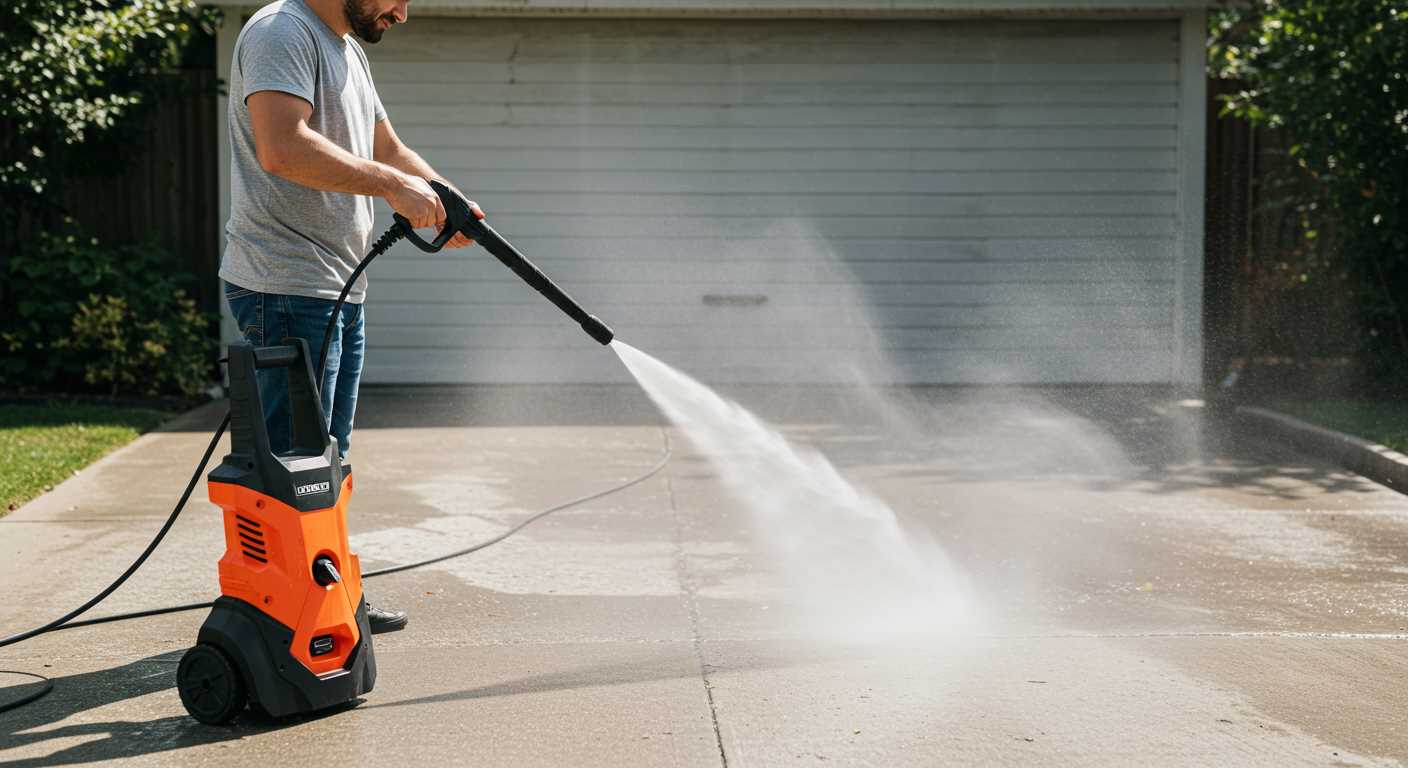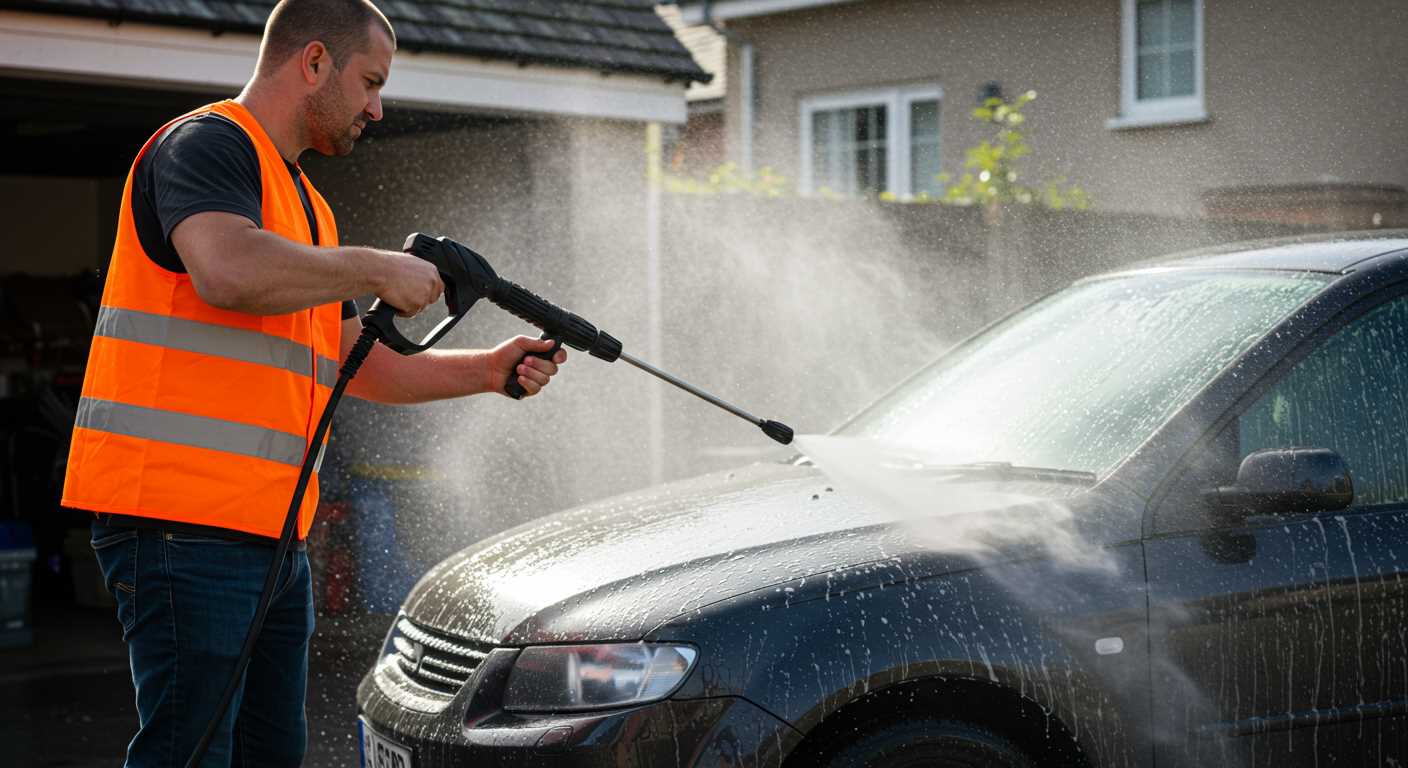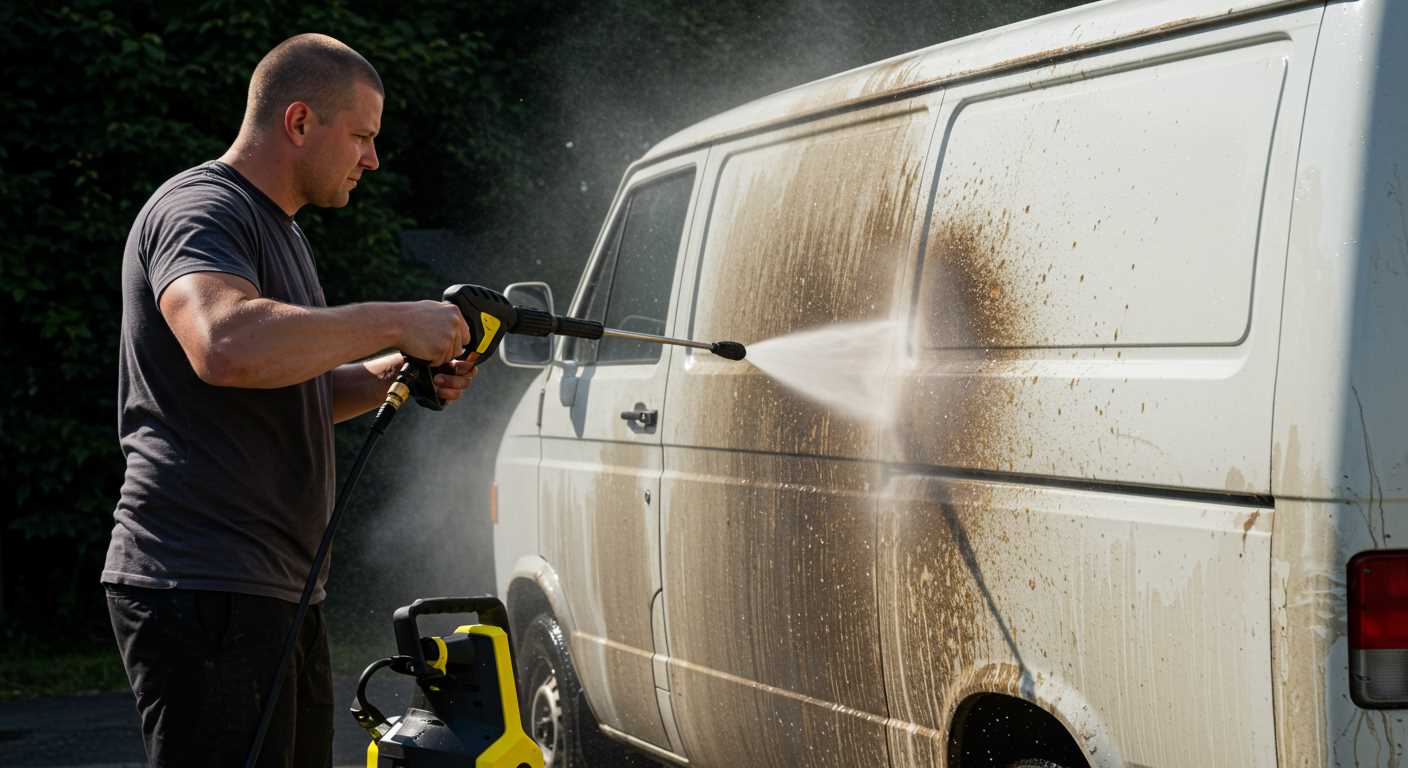
As a homeowner and DIY enthusiast, I’ve always been on the lookout for tools that can make my cleaning tasks more efficient and effective. One of the most significant investments I’ve made is in a belt drive pressure washer. In this article, I will share my insights and experiences with these powerful machines, and help you understand why they are an excellent choice for both residential and commercial use.
This article is designed for anyone considering the purchase of a pressure washer, especially those who want to tackle tough outdoor cleaning jobs like driveways, patios, and vehicles. I will break down the benefits of belt drive pressure washers compared to direct drive models, and provide a comprehensive guide to the best options available on the market today.
Throughout the article, you can expect to find detailed reviews of top-rated belt drive pressure washers, highlighting their key features, performance, and value for money. Whether you’re a seasoned professional or a weekend warrior, you’ll discover the right machine to meet your specific cleaning needs, ensuring you achieve outstanding results every time.
Understanding Belt Drive Mechanisms in Pressure Washers
Belt drive mechanisms are a crucial component of many pressure washers, particularly those designed for heavy-duty cleaning tasks. Unlike direct drive systems, belt drive setups utilise a series of belts and pulleys to transfer power from the engine or motor to the pump. This design not only enhances efficiency but also contributes to the longevity of the machine by reducing wear and tear on components.
One of the primary advantages of a belt drive mechanism is its ability to absorb vibrations and shocks, which can occur during operation. This characteristic results in smoother performance and less strain on the engine or motor, allowing for extended use without significant maintenance needs. Additionally, belt drive systems typically operate at lower RPMs, which can lead to quieter operation and improved fuel efficiency.
Benefits of Belt Drive Pressure Washers
- Durability: The belt drive system can prolong the life of the engine and pump by reducing direct stress and wear.
- Vibration Dampening: The belts absorb vibrations, which helps maintain stability during operation.
- Noise Reduction: Operating at lower RPMs can result in a quieter experience compared to direct drive models.
- Efficiency: The mechanism allows for better torque management, optimising power delivery to the pump.
In summary, understanding the belt drive mechanism is essential for selecting a pressure washer that meets your cleaning needs. With their robust design and operational benefits, belt drive pressure washers are often the preferred choice for both commercial and residential applications.
Best Belt Drive Pressure Washers Reviewed
Belt drive pressure washers are known for their durability and efficiency, making them a popular choice among both professionals and homeowners. These machines utilise a belt-driven system that tends to handle heavy-duty tasks more effectively compared to direct drive models. With various options available in the market, selecting the right model can significantly enhance your cleaning experience.
When evaluating belt drive pressure washers, it’s crucial to consider factors such as pressure output, flow rate, and overall build quality. These elements not only affect performance but also determine how well the machine will hold up over time. Below is an overview of key features to look for when assessing different models.
Key Features to Consider
- Pressure Output: Measured in PSI (pounds per square inch), this indicates the force of water being expelled. Higher PSI is ideal for tougher cleaning tasks.
- Flow Rate: Expressed in GPM (gallons per minute), this measures the volume of water used. A higher GPM will allow for quicker cleaning.
- Engine Power: Typically measured in horsepower, a more powerful engine can handle more demanding jobs while ensuring consistent performance.
- Build Quality: Look for heavy-duty materials, especially in the pump and frame, to ensure longevity and reliability.
In addition to these features, consider the ease of use and portability of the machine. Models that offer adjustable nozzles, quick-connect fittings, and larger wheels can significantly enhance user experience. Ultimately, investing in a belt drive pressure washer with these essential characteristics will yield satisfying results for various cleaning tasks.
Key Features to Look for in a Belt Drive Pressure Washer
When considering a belt drive pressure washer, it’s essential to focus on the features that will enhance performance and usability. These machines are designed for durability and efficiency, making them ideal for both residential and commercial cleaning tasks. Understanding the key features can help you make an informed decision.
One of the primary aspects to consider is the power output, which is typically measured in PSI (pounds per square inch) and GPM (gallons per minute). A higher PSI allows for more effective cleaning of tough stains, while a higher GPM results in quicker cleaning. Look for a balance that suits your specific cleaning needs.
Durability and Construction
Durability is another critical factor. Belt drive pressure washers often have a robust construction, including a heavy-duty frame and high-quality components that withstand rigorous use. This enhances longevity and reduces the frequency of repairs.
Additionally, consider the pump type. A triplex pump is generally preferred for its efficiency and longevity compared to other types. It can handle high pressure and is suitable for extended use, making it ideal for both commercial and residential cleaning tasks.
Ease of Use and Mobility
Mobility is vital for ease of use, especially in larger areas. Look for pressure washers with sturdy wheels and a lightweight design that allows for easy manoeuvrability. A comfortable handle is also important, as it contributes to user comfort during prolonged use.
Furthermore, pay attention to the accessories included with the pressure washer. Various nozzles, extension wands, and surface cleaners can enhance versatility, allowing you to tackle different cleaning tasks effectively. Be sure to choose a model that provides a range of options to adapt to various surfaces and cleaning challenges.
Maintenance and Serviceability
Lastly, consider the maintenance requirements. A machine that is easy to service will save you time and effort in the long run. Look for features that simplify routine maintenance, such as easily accessible parts and clear instructions for care.
In summary, when selecting a belt drive pressure washer, focus on power output, durability, ease of use, and maintenance features. These attributes will ensure that you choose a machine that meets your cleaning needs effectively and efficiently.
Comparing Performance: Belt Drive vs. Direct Drive
When considering pressure washers, understanding the differences between belt drive and direct drive systems is crucial for making an informed decision. Each type has its distinct operational methods, which influence overall performance, durability, and maintenance requirements.
Belt drive pressure washers utilise a belt to connect the engine to the pump. This design allows for more flexibility in engine placement and can lead to a reduction in vibrations and noise during operation. In contrast, direct drive pressure washers have the pump directly connected to the engine, resulting in a more compact design but often at the cost of increased noise and vibration levels.
Performance Comparison
Here are some key performance aspects to consider:
- Power Delivery: Belt drive systems typically provide better power delivery, enabling the pump to operate at optimal efficiency.
- Longevity: Due to reduced stress on the pump, belt drive pressure washers generally have a longer lifespan compared to their direct drive counterparts.
- Maintenance: Direct drive models often require more frequent maintenance given their simpler design, while belt drive systems may need less frequent servicing.
- Noise Levels: Belt drive pressure washers tend to operate more quietly, making them suitable for residential areas where noise restrictions may apply.
In summary, while both belt drive and direct drive pressure washers have their advantages, the choice between them ultimately depends on the specific needs of the user. For those prioritising durability and quieter operation, a belt drive model may be the better option. Conversely, if compactness and cost-effectiveness are more critical, a direct drive pressure washer could be ideal.
Maintenance Tips for Prolonging Your Belt Drive Pressure Washer’s Life
To ensure the longevity and efficiency of your belt drive pressure washer, regular maintenance is crucial. By following a few simple tips, you can keep your machine running smoothly and effectively for years to come. This not only saves you money on repairs but also enhances the performance of your equipment during use.
Regular maintenance tasks should include checking and replacing essential components as required. Here are some key practices to incorporate into your maintenance routine:
- Inspect Belts: Regularly check the drive belts for signs of wear and tear. Replace them if you notice cracks or fraying to prevent further damage to the system.
- Change Oil: Keep an eye on the oil levels and change the oil according to the manufacturer’s recommendations. Clean oil helps maintain engine efficiency.
- Clean Filters: Ensure that air and fuel filters are clean. Clogged filters can lead to poor performance and increased wear on engine components.
- Monitor Hoses: Check the hoses for leaks or abrasions. Replace any damaged hoses to avoid pressure loss and potential hazards during operation.
- Winterisation: If you live in a cold climate, properly winterise your pressure washer to prevent freezing and damage during the off-season.
In addition to these practices, always refer to the user manual for specific maintenance guidelines related to your pressure washer model. Consistent attention to maintenance will ensure that your belt drive pressure washer operates efficiently and has a longer service life.
Common Issues and Troubleshooting for Belt Drive Systems
Belt drive pressure washers are popular for their reliability and efficiency in various cleaning tasks. However, like any mechanical system, they can encounter issues over time. Understanding these common problems and their solutions can help maintain the performance of your pressure washer.
One frequent issue with belt drive systems is belt slippage. This can occur due to various reasons, such as improper tension or wear and tear. When the belt slips, it can lead to decreased pressure output and reduced cleaning efficiency.
Common Problems and Solutions
- Belt Slippage
Check the tension of the belt. If it is too loose, adjust the tensioner according to the manufacturer’s specifications. Additionally, inspect the belt for signs of wear and replace it if necessary.
- Vibration and Noise
Excessive vibration can indicate misalignment of the pulleys. Ensure that the pulleys are properly aligned and that the mounting brackets are secure. Lubricating moving parts can also reduce noise.
- Overheating
Overheating may result from prolonged use or inadequate cooling. Allow the machine to cool down between uses and ensure that the air intake is not blocked. Regular maintenance checks can help identify cooling system issues.
- Loss of Pressure
If the pressure washer is not delivering the expected pressure, inspect the pump and hoses for blockages. Clean or replace any clogged components and ensure all connections are tight.
Regular maintenance is crucial for the longevity of belt drive pressure washers. By addressing these common issues promptly, users can ensure their equipment remains in optimal working condition.
Choosing the Right Accessories for Enhanced Performance
When it comes to maximising the efficiency and versatility of your belt drive pressure washer, selecting the right accessories is crucial. The right attachments not only enhance the cleaning power but also allow you to tackle a variety of tasks, from light cleaning to heavy-duty jobs. Investing in quality accessories can significantly improve your overall experience and results.
In this section, we will explore some essential accessories that can elevate the performance of your belt drive pressure washer. These additions can help you achieve optimal results while ensuring that your equipment runs smoothly and efficiently.
- Nozzle Tips: Different nozzle tips allow for varying spray patterns and pressure levels. Consider having a variety of nozzle tips for different cleaning tasks.
- Extension Wands: These can help you reach high or hard-to-access areas without the need for ladders or scaffolding.
- Surface Cleaners: Ideal for cleaning large flat surfaces like driveways and patios, surface cleaners provide an even wash and save time.
- Brush Attachments: Perfect for scrubbing away tough grime on vehicles, decks, and patios, these attachments enhance the cleaning process.
- Pressure Washer Hose: A longer hose allows for greater mobility and the ability to clean wider areas without moving the washer around.
In conclusion, enhancing the performance of your belt drive pressure washer is achievable through the careful selection of accessories. By investing in the right tools, you can improve your cleaning efficiency, tackle a wider variety of tasks, and enjoy a more satisfying experience with your pressure washing projects. Make sure to assess your specific needs and choose accessories that will complement your washer for the best results.
Top 10 Best Belt Drive Pressure Washer

Best Belt Drive Pressure Washer
Features
| Part Number | 1 |
| Model | HLW-GYQ-5000PSI-1 |
| Color | Black-orange |
Video:
FAQ:
What features should I look for in the best belt drive pressure washer?
When selecting a belt drive pressure washer, consider several key features. Firstly, the engine power is crucial; a more powerful engine will typically provide higher pressure and flow rates, making it more effective for tough cleaning tasks. Additionally, the construction quality matters; look for a sturdy frame and durable materials that can withstand heavy use. The type of pump is also significant; belt drive pumps tend to be more reliable and quieter than direct drive models. Furthermore, check the nozzle options available, as various nozzles allow for different spray patterns and pressures, making the washer versatile for different cleaning needs.
How does a belt drive pressure washer differ from a direct drive model?
A belt drive pressure washer uses a belt to transfer power from the engine to the pump, which generally results in less vibration and noise during operation. This design typically allows for a longer lifespan of the pump due to reduced wear and tear. In contrast, direct drive models have the pump connected directly to the engine, which can lead to a more compact design and potentially lower costs, but may suffer from higher noise levels and less durability under heavy use. It’s essential to evaluate your cleaning requirements to determine which model suits your needs best.
Can I use a belt drive pressure washer for both residential and commercial purposes?
Yes, a belt drive pressure washer can be suitable for both residential and commercial applications, depending on its specifications. These machines are often more robust and designed to handle heavier workloads, making them ideal for commercial cleaning tasks. For residential use, they can efficiently tackle driveways, patios, and vehicles. However, it’s essential to choose a model with appropriate pressure ratings and flow rates for your specific cleaning tasks. Always consider the warranty and service options for commercial use as well.
What maintenance is required for a belt drive pressure washer?
Regular maintenance is vital to ensure the longevity and performance of a belt drive pressure washer. Begin by checking the oil levels and changing the oil as recommended by the manufacturer. Inspect the air filter and replace it if it appears dirty to keep the engine running smoothly. Additionally, ensure the pump is adequately lubricated and free from debris. It’s also important to check the belts for wear and tension, as well as the hoses and nozzles for any signs of damage. Performing these checks regularly can help prevent more significant issues down the line.
Are there any specific brands known for high-quality belt drive pressure washers?
Several brands are recognised for producing reliable and high-quality belt drive pressure washers. Brands like Simpson, Generac, and Honda are often praised for their durable construction and effective performance. Simpson, for example, is known for its powerful models that cater to both residential and commercial needs. Generac offers a variety of options with user-friendly features and good warranty support. Honda, while primarily known for its engines, also provides robust pressure washers that are well-regarded in the market. It’s advisable to read reviews and compare specific models within these brands to find the best fit for your requirements.
What are the main advantages of using a belt drive pressure washer compared to a direct drive model?
Belt drive pressure washers generally offer several benefits over direct drive models. Firstly, they tend to be quieter during operation, making them more suitable for residential areas or settings where noise is a concern. Secondly, belt drive systems often have a longer lifespan because they reduce the wear and tear on the pump and engine, allowing for more efficient power transfer. This can result in less maintenance and a more reliable performance over time. Additionally, belt drive washers typically provide better pressure control and stability, which can enhance the overall cleaning efficiency for various tasks.




.jpg)


